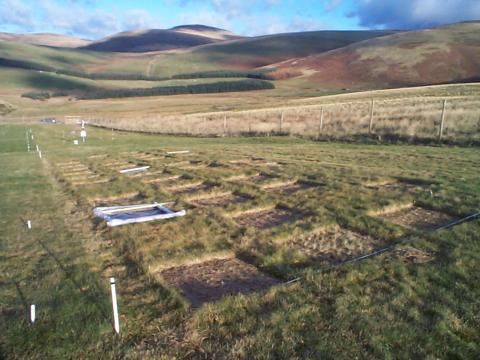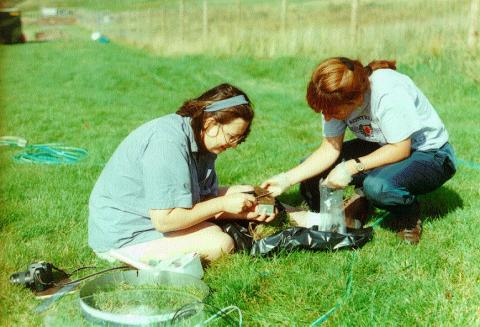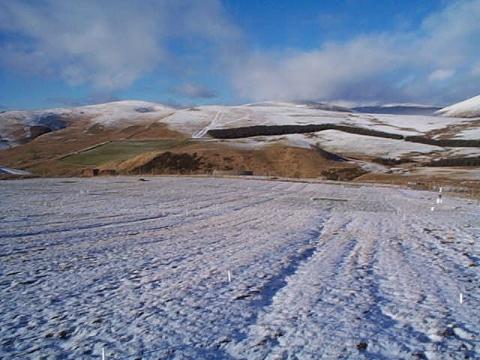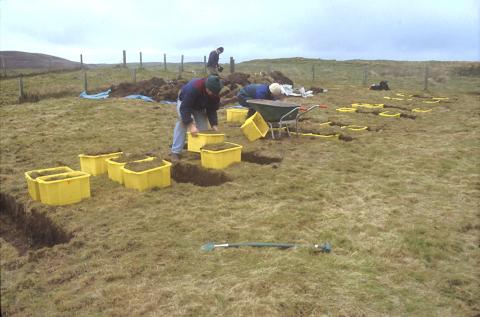The research focussed on a grassland system at the Sourhope Research Station in the Cheviot Hills, which is part of the UK Environmental Change Network and was the most thoroughly studied site in the SOAEFD MicroNet programme. Sourhope has extensive areas of upland grassland (Agrostis-Festuca; National Vegetation Classification U4), for which data on microbial diversity were already becoming available.
The Rigg Foot Experimental Site at Sourhope consisted of five replicate blocks arranged in downslope environmental gradients in the chosen area of grassland. Each block contained six main plots with treatments allocated at random. The main plots were subdivided into sub plots to allow for the individual sampling strategies of award-holders.

View of the experimental site at Sourhope

Researchers at Sourhope during the Soil Biodiversity Programme

A snowy view of the Sourhope site during the winter

Preparing experimental plots at the Sourhope site